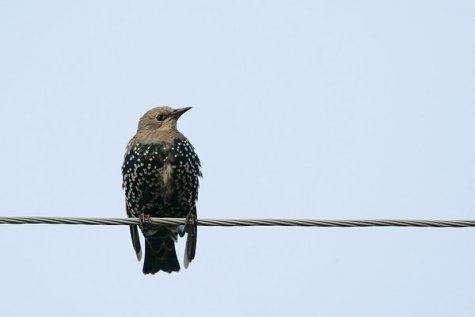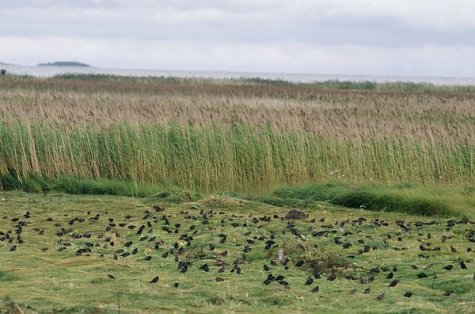Young starlings are having adventures
Photos: Arne Ader
Translation:SilverT
Starling
Common starling Kuldnokk Sturnus vulgaris
Flock-forming starlings could be seen already in the end of July: on fields and hayfields during daytime and on the seaside, reed beds or shrubbery during nights. Most of the wanderers are young birds, who don`t have the patience to sit around their birth homes – our starlings travel to the north and starlings from Finland and Russia travel to Estonia. Such companies of birds are the „berry-thieves“ of our gardens, but they have to feed themselves someway.
Plumage of adult birds has lost the metal shine of springtime. Transformed plumages are now greyish brown, with also some lighter spots which are similar to the ones of young birds – they appear greyish from distance. Nesting adult birds settle down for a longer period and their song can be heard at the nesting sites until late August or sometimes even in September.
Autumn migration of starlings ends when the snow comes and waters freeze.
Manilaiu seaside meadow with starlings










